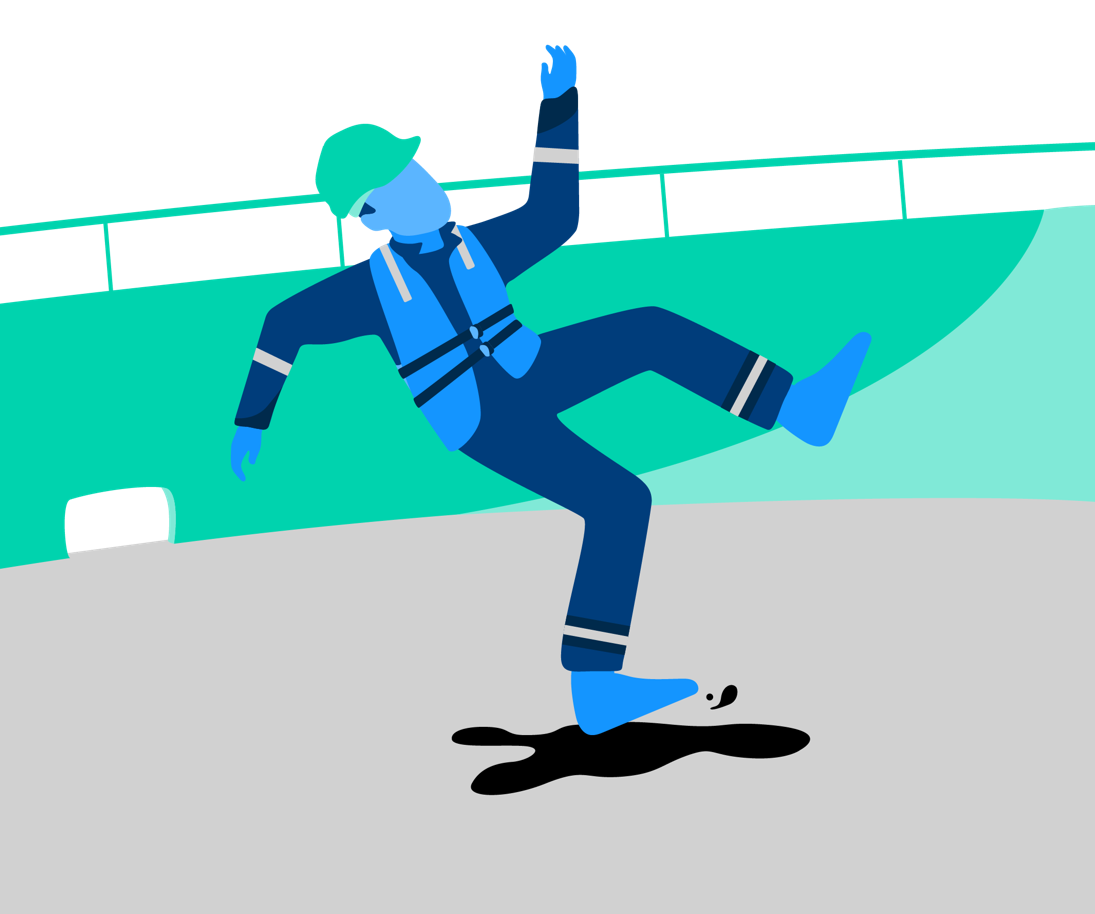What happened?
The Norwegian Maritime Authority often receives reports of accidents where crew members are injured during mooring operations. Crew members are involved in fall accidents on shore, on board or overboard. The nature and causes of the reported accidents are different.
Injuries may be of a serious nature, and how things turn out seems to be a matter of coincidence. Mooring accidents have also led to casualties among the crew.
Example of an accident on a passenger ferry:
A crew member fell into the sea during a mooring operation.
An able seafarer and a motorman were on the car deck when the chief mate went ashore to release the mooring lines. All machinery and propellers were operating. The chief mate on the quay was about to release the last mooring line. He grasped the eye of the mooring line, and using his arm, he signalled to the motorman on deck to heave away.
The chief mate did not realise he was standing on the coiled heaving line attached to the mooring line, because the line was covered by fresh snow. The motorman who was on deck heaving the line by means of the winch, was focused on the mooring line which was on its way on the deck and was not able to see the quay and the chief mate from his position.
The chief mate released the mooring line which fell into the water before it was pulled through the chock. The heaving line got caught around his right leg, and the chief mate was dragged a few metres along the quay, over the quayside and into the sea. He was then hauled up from the sea by his foot, all the way to the chock, approximately 2-3 metres. The heaving line snapped just before the leg was dragged in through the chock, and the chief mate fell once again into the sea.
The chief mate was rescued a few minutes later by crew members in a rescue boat launched from another vessel, which was approaching the quay.
Causes
The direct cause of the accident, as described above, was the heaving line that got caught around the chief mate’s leg.
However, the underlying cause could be more complex, and risk assessments and crew experience will always be important factors.
Based on this incident, underlying causes and important factors could involve:
- the vessel, mooring equipment and quay;
- Is it a good idea not to remove the heaving line from the mooring line when mooring is completed?
- Should snow be cleared from the quay area?
- Is it possible to launch the vessel’s own rescue boat in the event of a man-over-board situation?
- monitoring of the mooring operation;
- Is there a sufficient number of crew members to carry out the operation?
- Is it possible to maintain visual contact between the vessel crew and mooring team?
- Is there a shift of focus on board when using a winch?
- lack of mooring operation experience;
- Are all participants adequately trained for the operation?
- Is it taken into account that what is considered a routine operation to some may be new to others?
- risk assessment of mooring operations;
- Are all possible scenarios described?
- Is there an overall assessment for all mooring operations?
- mooring procedure;
- Does the procedure involve the use of personal protective equipment?
- Does it include any assessments that should be made?
- Does it say anything about the specific work operation?
This list is not exhaustive.
Lessons learned
- Even when carrying out routine operations, it is important to ensure your own and others’ safety.
- Thorough planning of the operation helps ensure it can be carried out safely.
- What measures will be taken in the event of an accident? These issues should be included when preparing for this type of operation to minimise the consequences of falls on a quay, deck or in the sea.
References
- Regulations No. 1191 on a safety management system for Norwegian ships and mobile offshore units
- Regulations No. 1770 on safety management for small cargo ships, passenger ships and fishing vessels, etc.
- Regulations No. 8 on working environment, health and safety of persons working on board ship section 2-2 concerning the requirement for risk assessment, use of safety and protective equipment, see sections 9-1 and 9-5.

